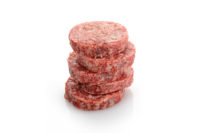How optimal interleaving materials can boost the bottom line

In the food processing industries, wax paper, parchment paper, and plastic film interleaving materials are traditionally placed under bacon, sliced deli meats, cheese, or dough products for portion/inventory control and sanitary handling before final packaging. With such placement, processors can also improve ease of preparation, separation, freeze release, shelf life, and package presentation.
While interleaving materials are typically viewed as a commodity, material innovation as well as integration with high-speed interleaving machines can significantly enhance production, shelf life, food safety and consumer appeal across a wide range of industries.
In the near future, even more innovative interleaving materials will enable improved microbial control, pathogen detection, and product traceability. Individualized flavor profiles, using interleaving materials as “flavor wraps”, will also provide increased variety to satisfy consumers. With all the functional capabilities of these enhanced interleaving materials, packaging machines will essentially become processing machines as well.
Bolstering Package Performance and Production Runnability
For food processors, the quality of the interleaving material and how well it matches the equipment translates directly into greater production and uptime.
Interleaving speed can range from about 10 portions per minute manually, to 30 portions per minute with typical equipment, to 300 per minute with high-speed equipment; and production downtime can vary from 10% to as little as 0.5%, according to Craig Deppert, Material Sales Manager at Packaging Progressions, a company that specializes in the design, manufacture, and implementation of automatic, high-speed interleavers, stackers, and consumable interleaving materials.
However, getting production numbers that high takes great attention to detail and an engineering perspective. A wide range of interleaving material factors should be considered.
“For superior interleaver runnability, you need a superior paper substrate made to run on the equipment, with proper and consistent size, thickness, stiffness, tear strength, and tensile values so when it runs through the machine it will hold up,” says Deppert.
He adds that it is also essential to solve any package performance application issues that may occur, such as determining the proper balance of wet strength versus freeze release or whether to utilize paper or plastic film. In this capacity, it can be important for the interleave material to have the correct specification for the coefficient of friction, so it will adhere and release properly to food portions or other product.
“The goal is to optimize both package performance and production performance,” says Deppert.
Even using specific paper waxing techniques that prevent wax from accumulating on the interleaver’s moving parts is important. One innovative solution to eliminate such wax buildup is to use a dry wax interleaving product, where the wax is “in the paper, not on the paper,” explains Deppert, “This eliminates both shutdowns to clean off the wax and any foreign material problems.”
With the correct integration of interleaving material and equipment, the payoff can be tremendous not only in enhanced production, but also in less wasted product.
As an example, when a large-scale bacon processor buying a million pounds of interleaving paper annually became frustrated with production downtime, Packaging Progressions analyzed their process and determined that switching to a different formulation would resolve much of the difficulty.
“By switching to a customized specification, the bacon processor saved over $800,000 annually, due to the elimination of downtime and waste reduction,” says Deppert.
Enhancing Shelf Life, Food Safety, and Consumer Appeal
Active Packaging: Active packaging is the practice of adding value to packaging materials, usually by improving the safety or freshness of the contained product. One of the most promising uses of active packaging involves the use of interleave materials to help effectively control secondary microbial exposure, where pathogens may be introduced by contact with a person once a package is opened.
Active and passive microbial inhibitors, for example, when applied to or formulated in the interleaving material can help to enhance shelf life and food safety.
“Traditional methods involve introducing additives directly to the food product to inhibit microbial growth,” says Drew Ward, Packaging Progressions, Inc. CEO. “However, it can be more expensive when applied directly to the food, and must be included on the label as a food ingredient. This can be a turn-off to health-conscious consumers, who increasingly are looking for ‘clean labels’ with minimal additives.”
“In the case of direct surface application of an inhibitor onto a food product, it can be difficult to get even coverage on all sides,” says Ward.
“With active packaging, if we could add a week of shelf life to bakery products, a day of shelf life to meat, and an hour of shelf life to seafood, the results would have real impact,” says Ward. “Those products might even benefit from not being frozen in certain cases.”
According to Ward, the antimicrobial additive can either be put in the wax that gets impregnated into wax interleave paper, or added and embedded into plastic interleave material when it is manufactured. When combined with a roll stock interleaving machine, the paper or plastic film can be cut to length off of the roll allowing for precise metering of the additive and accurate application of the treated substrate in between or around the food portions.
“Microbial growth generally occurs on the surface of the product. Our systems are well suited to the application because they can wrap the treated substrate around the product precisely and fully, contacting both sides of the food product at minimal cost, so you are not wasting antimicrobial material on places you really do not want it. This is not the case with most systems,” says Ward.
“Consumers also get a ‘cleaner label’ because the microbial inhibitor is part of the packaging, and not part of the food product itself,” he adds.
Ward says that active packaging solutions that incorporate interleave paper are achievable today, but would need to be tailored to the specific industry and application.
Targeted Pathogen Detection: Further out on the horizon, interleave materials will also be developed that will meet the need for detecting certain dangerous pathogens.
To comply with regulation or a large supplier’s demands for safety, for example, “bioactive materials” will be applied to interleave material that could indicate the presence of a specific pathogen, according to Ward.
“A bioactive material would only activate, perhaps change color, in the presence of a certain pathogen,” explains Ward. “So, non-activation would mean that the food product is not exposed to the targeted pathogen, and therefore safe in that regard.”
Traceability: Interleave material innovation that will occur in the future may make it possible to quickly and precisely trace a food recall problem to its origin, saving potentially millions of dollars in product waste and bad publicity.
According to Ward, the use of conductive nanoparticle inks will allow RFID tags to be printed directly into the interleave material allowing processors, distributors and operators full and real time traceability of their products through the entire lifecycle with granularity to the portion/serving level.
This would allow any supply chain to code the antennae when the paper is placed around the portion and then track the portion throughout its lifecycle until the portion is prepared and the paper with the tag passes through a scanner on the trash receptacle at the point of sale. When the transaction is complete, inventory is credited and the data is potentially fed back to a blockchain enabled ledger to reduce supply chain liability exposure.
“When you get granular down to the portion level of a regional or national supply chain, you get real visibility and actionable data,” says Ward.
Flavor Transfer: Utilizing interleaving systems to add flavor profiles to products has the potential to turn batch operations into on demand operations. This virtually eliminates the need for minimum order quantities, costly inventory stores, and process intensive operations. Adding flavors to interleaving materials that transfer specific flavor profiles to the food product could allow processors to respond quickly in custom quantities, yet still offer a variety of flavors or marinades.
“Food processors could make plain chicken or beef products, then run it over with an interleaving system that would apply a flavor sheet to the top and bottom of the portion,” says Ward. “The flavors could be black pepper, teriyaki, lemon herb, Cajun seasoning, or really anything.”
According to Ward, this could work by either transferring the flavor to a moist product in the process or packaging. Or by bonding the flavors to a high temperature parchment paper with seasoning that could be cooked in a skillet.
While food processors are accustomed to traditional manufacturing methods, those that take advantage of advancements in interleaving material technology, and integrate these with their systems, will significantly increase production, shelf life, food safety, and ultimately consumer sales.
For more information about Packaging Progressions call (610) 489-8601, e-mail sales@pacproinc.com or visit www.pacproinc.com.
Looking for a reprint of this article?
From high-res PDFs to custom plaques, order your copy today!






